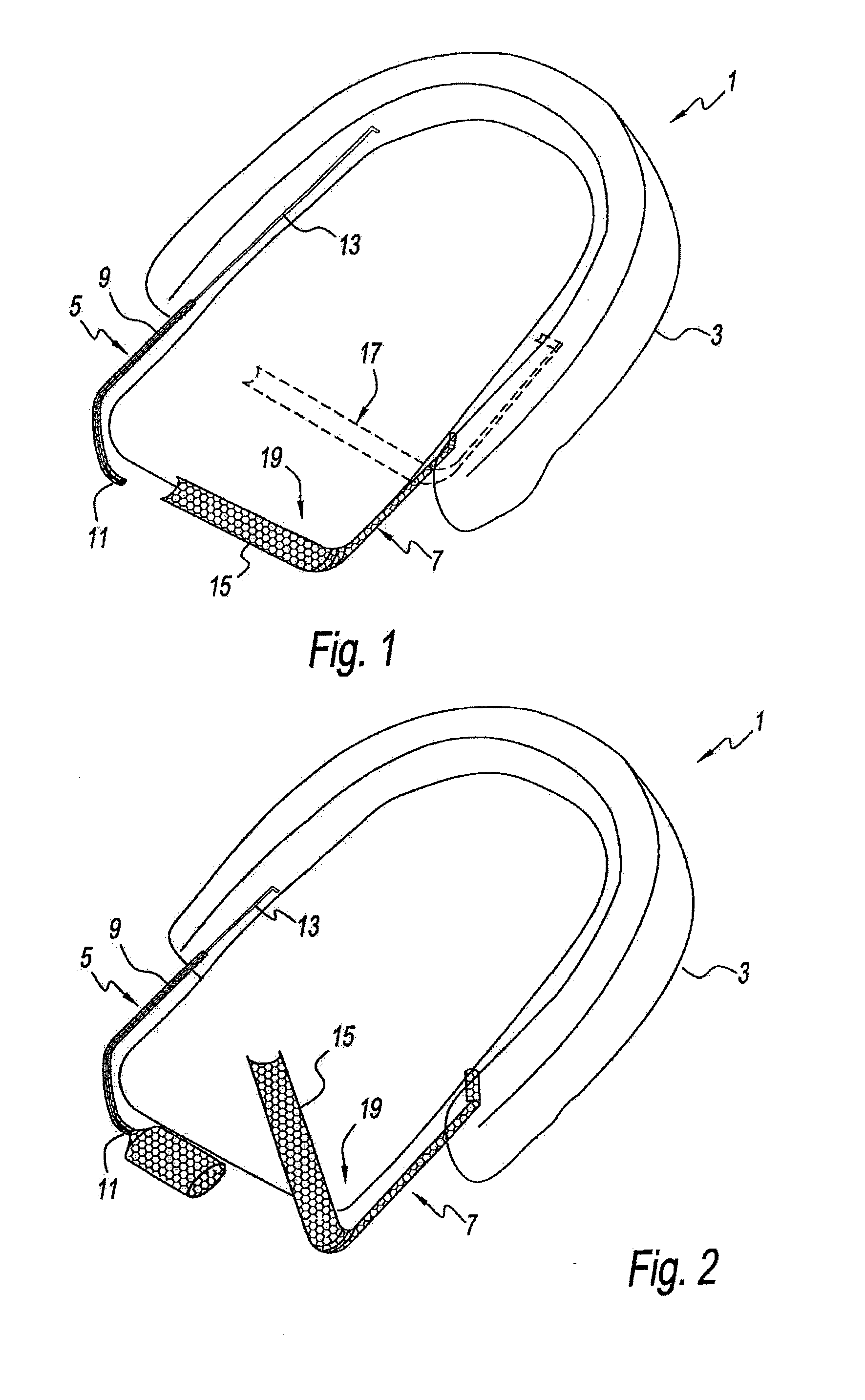Devices, systems and methods for the treatment of sleep apnea
a technology for sleep apnea and sleep disorders, applied in the field of sleep apnea devices, systems and methods, can solve the problems of hypersomnolent sleep apnea patients at risk for excessive mortality, potentially severe degrees of oxyhemoglobin unsaturation, and reduced arterial oxygen tension
- Summary
- Abstract
- Description
- Claims
- Application Information
AI Technical Summary
Benefits of technology
Problems solved by technology
Method used
Image
Examples
Embodiment Construction
[0101]The present disclosure can best be described by referring to the figures, wherein FIG. 23 shows a cross-section of a patient's oral cavity 1. Oral cavity 1 includes a tongue 3, upper jaw 5, lower jaw 7, soft palate 9, and epiglottis 11, as well as the nasopharynx region 13, oropharynx region 15 and laryngopharynx region 17. In addition, nasal valve 19 and nose 21 having a nasal passageway 23 to connect nasal valve 19 with nasopharynx region 13.
[0102]Referring now to FIG. 1, an oral appliance 1 according to a first embodiment of the present disclosure is disclosed, comprising a molded retainer 3 which is designed to fix securely about a patient's teeth in the lower jaw, thereby securing appliance 1 to the patient's jaw. Alternatively, retainer 3 can be designed such that it is only disposed about a portion of the teeth rather than the entire lower or upper jaws.
[0103]For example, one side of the jaw could hold a retainer with a device aimed at supporting the soft palate and the...
PUM
 Login to View More
Login to View More Abstract
Description
Claims
Application Information
 Login to View More
Login to View More - R&D
- Intellectual Property
- Life Sciences
- Materials
- Tech Scout
- Unparalleled Data Quality
- Higher Quality Content
- 60% Fewer Hallucinations
Browse by: Latest US Patents, China's latest patents, Technical Efficacy Thesaurus, Application Domain, Technology Topic, Popular Technical Reports.
© 2025 PatSnap. All rights reserved.Legal|Privacy policy|Modern Slavery Act Transparency Statement|Sitemap|About US| Contact US: help@patsnap.com



